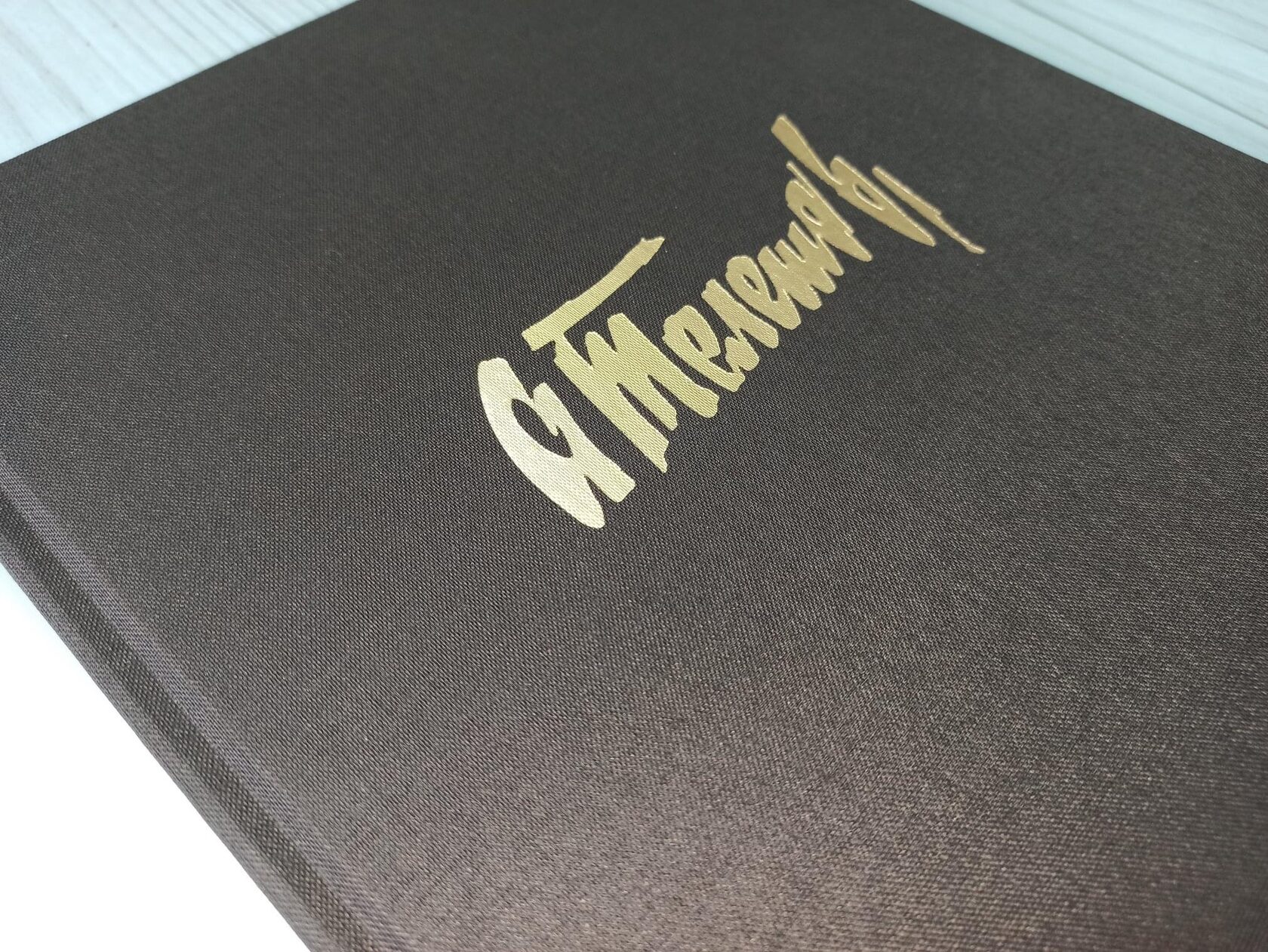"Anatoliy Teleshov graduated from college in 1952 with the dream of continuing his training as a painter. However, he found an original way of growing his talent without entering any higher-educational institutions of art. His work at the Academicheskaya Dacha (later named for I. Repin), in Central Russia, helped him lay claim to his own education. From the first time he visited the “Academichka” in 1954, it became his home-place. Teleshov stayed there often, and every season ended in the formation of the unique creative groups of artists which appealed to him immensely. Participation in the work of these groups gave him a chance to broaden his views, which was very important for a young artist living in the Far East. Collaboration work, in the open air and in the studios, revived the ancient master-apprentice teaching approach."
~ Vitaliy Kandyba
Art historian, author of the essay for the book "Anatoliy Teleshov."

Oil on cardboard. 14 x 27.5 in.
Far Eastern Art Museum, Khabarovsk.
"An artist searching for his ways in art is trying to relate his works not only to the environment, but also to the context of contemporary art, thus declaring something for or against. The artists who represented the school of the "Academichka" started to differentiate between notions of "Russian" and "Soviet" painting. Teleshov belonged to the artists who didn’t want to identify themselves with "Soviet" art and strove for national self-identification. Teleshov’s orientation to national tradition demanded an appropriate theme. In the early 1960s, a theme of “common people” living in the country started to claim itself in literature. The topic of the modern Russian countryside also became a theme in painting. Later, Aleksandr Solzhenitsyn, in his "Matrena’s Farmstead," presented a crystal country prose within the frame of Soviet literature. This theme offered."
~ Vitaliy Kandyba
"The best way to comprehend his position is to compare two portraits from the 1960s, “Nadya” (1960), and “Katya” (1965). The girls’ social background remains anonymous, which was customary for Soviet painting in the 1940s and 1950s. The artist focuses on the human aspect of his characters. Nadya is a dark-complexioned girl with a yoke on her shoulders. She is shown in movement, with a summer landscape in the background. The girl is presented as a transient non-persistent fragment so familiar in Impressionist painting. Her white triangular scarf and summer frock accumulate a strong torrent of light. The figure of the girl is akin to a patch of sunlight on a background of green. “Nadya” is presented like a metaphor of a Russian summer in the country. It is useless to search for psychological characteristics of the girl in the portrait, since the plein-air and psychological approaches stay in opposition to each other. As a rule on canvases where the landscape plays a dominant role, the inner features of the character step into the background."
~ Vitaliy Kandyba

"The portrait “Katya” is the best illustration of this statement. Its coloration is determined by the laws of indoor painting. “The breath of nature,” indispensable to Impressionism, is hardly perceived. Soft evening light is dispersed in the studio of the artist who is completely concentrated on the reflection of a female’s soul. The arrangement of color composed of blue, dark blue, and pearl-gray emphasizes the beauty of the girl’s face. The brushstrokes are legible but soft. It is clear that the artist is familiar with the exquisite culture of shadow painting. “Sounding” color coming from the outside doesn’t interfere with the song of the girl’s inner world."“Katya” radiates the light of her soul and her crystal femininity. These two portraits, though “written” in the same period, are very different and define Teleshov as a character in a Russian folk-tale in a moment of decision-making standing at the crossroads. The young artist seems to conceal two equal but opposed predispositions. He might develop himself as an artist of the inner life. "
~ Vitaliy Kandyba


Oil on canvas. 15.7 x 39.3 in.
Primorsky State Picture Gallery, Vladivostok, Russia.

Oil on canvas. 32.6 x 35.4 in.
Primorsky State Picture Gallery, Vladivostok, Russia.
~ Vitaliy Kandyba

Oil on canvas. 28 x 32.2 in
involved in meeting this challenge. He continued to develop his plein-air technique all his life. We
can find confirmation in heaps of sketches carefully kept by the artist’s family. We can appreciate his
hard work over his famous paintings only through getting acquainted with the large volume of sketch-
es, supporting the idea of self-perfection."
~ Vitaliy Kandyba

Oil on cardboard. 12.2 x 25.6 in.
Primorsky State Picture Gallery, Vladivostok, Russia.
"In the 1960s Teleshov’s works acquired a new characteristic feature. He traveled a lot and visited a great number of places in Primorye, but his visit to Nakhodka town turned into something special. This place impressed Teleshov more than his native city. We can find many works inspired by the Nakhodka landscape and very few of Vladivostok. We realized this disproportion in his creative heritage when it was too late to address the question to the artist. Now it is clear that the reason for this preference lies in the fact that he noticed much more nature in Nakhodka than in Vladivostok. The town did not overwhelm nature, it fitted it perfectly. The houses scattered on the hills look cozy and form the breathing rhythm of a mosaic. The presence of people is only incidental. The main part in the landscape of the town is played by Nature; it is the main key to his works."
~ Vitaliy Kandyba
"... I remember one of the hot summer days in Andreevka village... The sun beams fall vertically, and the green grass clings to the wall more densely - into the soothing shadow. Above the river is a glass haze. In such heat, artists usually relax in shady arbors, on verandas, and prepare for evening sketches. Teleshov came from the forest with a full basket of mushrooms, flushed from a long walk, with cobwebs tangled in thin strands of hair. His face shone with almost boyish joy when he poured ruddy saffron milk caps and russula, glossy butternut squash, and aspen mushrooms onto the table. In all this sparkling play of colors, the fresh breath of nature lived - and the unsteady calm of the July night, and the wild chill of fern plants ... hastily, so as not to miss this excited sensation of beauty, the artist takes a brush and approaches the canvas ... This is how one of Teleshov's most interesting still life was born.."
~ V. Semkin (the artist and poet)


"In the 1970s, Teleshov visited a small village, Andreevka, in the southern part of the Primorye territory. Visiting this beautiful spot became a crucial event in his life. From that point, Teleshov visited this place regularly every season, staying there for several months, sometimes from early spring until the first autumn frost, waiting for snow to cover the ground. The place was worthy of admiration, with all the beauty of the southern part of Primorye, and absolutely different from its wild central and northern parts, with their severity, monotony, and restraint. Nature in Andreevka wears a different attire; the landscape is round in form because it repeats the lines of the bays and the nooks. The expanse of Nature is neither pressing nor distressing; it lacks the extremes. The sea penetrates the land, thrusting into the soil with its bays, nooks, and straits between the islands. Villages, settlements, fish factories, piers, forts, and scientific stations are scattered along the beaches. People are exposed to the sea, life itself comes from the sea, and the sea constitutes an essential part of the landscape. Primorye in Russian actually means “a territory near the sea.” In Andreevka you realize this meaning literally."
~ Vitaliy Kandyba

Oil on cardboard. 30.3 x 26.3 in.
Primorsky State Picture Gallery, Vladivostok, Russia.
~ Vitaliy Kandyba
Oil on canvas. 31.4 x 51 in

